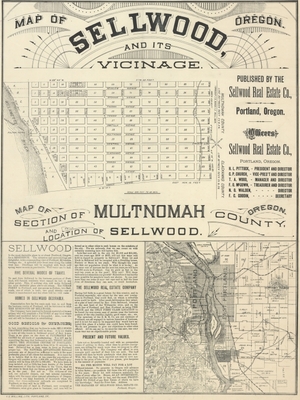From 1895 to 1897, a group of farmers in Sellwood, a town on the Willamette River southeast of Portland, published an influential anarchist newspaper. The masthead of the Firebrand, a weekly publication, proclaimed its mission: “For the Burning Away of the Cobwebs of Ignorance and Superstition.”
Unlike many anarchist publications in an era during which they proliferated, the Firebrand tackled social issues as well as politics. It proposed, for example, radical changes in relationships between women and men. In addition to reporting news about local anarchist communists and promoting free love, it also published critical responses to Herbert Spenser’s Principles of Sociology, reported on the impending release of Oscar Wilde from prison, and ran stories on the actions of the Catholic Church in Spain.
The principal writers and editors of the Firebrand included Henry Addis and Abraham Isaak in Portland and anarchist writers such as William Holmes in Colorado and Viroqua Daniels in California. Subscribers were from the United States, Canada, and Europe, and the paper received support in a variety of ways. “We accept anything we can use in payment for subscription,” the editors wrote in a “Special Announcement.” One supporter in Minnesota offered instruction in avian taxidermy to those who mailed the editors a quarter. Tacoma anarchists sponsored a zither concert. One issue thanked comrades for contributions of raspberries and currants.
As the Firebrand’s reported circulation increased, so did published accounts of its suppression. The librarian of the Loveland, Colorado, Reading Room destroyed copies of the paper. The Firebrand’s liberal attitudes about sexuality prompted local condemnation and the arrests of Addis, Isaak, and A.J. Pope on charges of distributing obscene materials through the mails. One of the objectionable materials was “A Woman Waits for Me,” a poem by Walt Whitman.
At the end of the trial, the jury’s hasty guilty verdict was set aside by the presiding judge, who suggested that the defendants could request a new trial if they wished. Addis and Isaak quickly gained their freedom, but the Firebrand ceased publication.
-
![]()
Map of Sellwood, Oregon, c.1882.
Courtesy Multnomah County Library
Map This on the Oregon History WayFinder
The Oregon History Wayfinder is an interactive map that identifies significant places, people, and events in Oregon history.
Further Reading
Avrich, Paul. Anarchist Portraits. Princeton, N.J.: Princeton University Press, 1995.
Schwantes, Carlos. "Free Love and Free Speech on the Pacific Northwest Frontier." Oregon Historical Quarterly 82:3 (Fall 1981): 271-293.
The Firebrand 1895-1897. Oregon Historical Society Library, Portland, Oregon. Microfilm.



